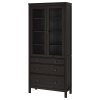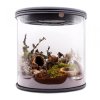Hi, I'm really glad I found this forum as I am so new to this hobby I haven't even got my spiders yet (they are due to arrive 05/01/2022 )
It has taken me 46 years to finally get a tarantula, I was 6 when I first asked my parents but they said "no". Once I grew up, marriage, kids and a husband who isn't keen on things with "too many legs" also dissuaded me from taking the plunge, but after a recent discussion with my daughters and my husband we are all in agreement that I can adopt a couple (few) Ts.
My biggest concern was how long they can potentially live, I'm 52 now so I'm aware that a T might outlive me, but once the girls assured me they would take it on if needed, I was less worried. Hubby doesn't mind either as they'll be in terrariums, although it took a few years for him to get used to house spiders not only being allowed to roam around, but that I used to feed one of the tegenaria in our downstairs cloakroom any flies I had just stunned with the flyswat raquet.
I haven't kept inverts (other than stick insects as a kid), but I have experience caring for other more demanding pets. For a few years I used to work in a tropical fish shop (because it gave me staff discount), and I used to come home with various rescues. At one stage I had 13 tanks ranging from 60 litres to 530 litres, each with their own parameters needed for their specific inhabitants. Now after 20 years I'm down to just 1 tank and a pond outside, but some of the fish in there I've had 20 years, which is pretty good for a fish with a life expectancy of 8 - 10 years.
I also worked as a professional falconer before I had the kids so the occasional injury such as being grabbed by a buzzard doesn't worry me too much. I'm hoping not to be bitten by a T, but I have a very high pain threshold, so if something unexpected does spook one I'm not going to drop it, although I will probably swear profusely! I'm also not planning on handling them other than when necessary and I doubt that would be often.
So the 2 Ts coming are a juvenile Smithii and a juvie Caribena versicolor. I would love a T albopilosus too, but the shop only had slings left in stock and I want to learn to walk before I start trying to run. (I have got a 3rd tank coming on the same day though, ready for when more are in stock).
The tanks will be kept in a glass fronted cabinet in quite a dark, fairly quiet room (my office at the back of the house). I've ordered green lighting for during the day and red lighting for the evening and these will be mounted below the shelf which is above the tanks. I figured I could put them on timers in the same way I would a fish tank?
I also have a heatpad for the back of the cabinet so I should be able to keep the temperature relatively static throughout the cabinet. The only real concern I have at the moment is in balancing the humidity with the air circulation for the versicolour but hopefully I'll be able to manage reasonably well.
I won't be using real plants as the room and the cabinet don't get much natural sunlight, but I've ordered a few fake plants.
Another question I have is around other artificial plants. Basically because the only fake plants you should put in a fish aquarium are ones designed just for that purpose. Other fake plants may have toxins in which would kill the fish. Do spiders have similar sensitivities? I'm asking because I got a lovely fake orchid from Ikea which would look great in the versicolor tank, but I don't want to risk the spider.
Sorry for the long essay, but hopefully I've given you some insight as to what stage I'm at. Any advice would be very much appreciated!
It has taken me 46 years to finally get a tarantula, I was 6 when I first asked my parents but they said "no". Once I grew up, marriage, kids and a husband who isn't keen on things with "too many legs" also dissuaded me from taking the plunge, but after a recent discussion with my daughters and my husband we are all in agreement that I can adopt a couple (few) Ts.
My biggest concern was how long they can potentially live, I'm 52 now so I'm aware that a T might outlive me, but once the girls assured me they would take it on if needed, I was less worried. Hubby doesn't mind either as they'll be in terrariums, although it took a few years for him to get used to house spiders not only being allowed to roam around, but that I used to feed one of the tegenaria in our downstairs cloakroom any flies I had just stunned with the flyswat raquet.
I haven't kept inverts (other than stick insects as a kid), but I have experience caring for other more demanding pets. For a few years I used to work in a tropical fish shop (because it gave me staff discount), and I used to come home with various rescues. At one stage I had 13 tanks ranging from 60 litres to 530 litres, each with their own parameters needed for their specific inhabitants. Now after 20 years I'm down to just 1 tank and a pond outside, but some of the fish in there I've had 20 years, which is pretty good for a fish with a life expectancy of 8 - 10 years.
I also worked as a professional falconer before I had the kids so the occasional injury such as being grabbed by a buzzard doesn't worry me too much. I'm hoping not to be bitten by a T, but I have a very high pain threshold, so if something unexpected does spook one I'm not going to drop it, although I will probably swear profusely! I'm also not planning on handling them other than when necessary and I doubt that would be often.
So the 2 Ts coming are a juvenile Smithii and a juvie Caribena versicolor. I would love a T albopilosus too, but the shop only had slings left in stock and I want to learn to walk before I start trying to run. (I have got a 3rd tank coming on the same day though, ready for when more are in stock).
The tanks will be kept in a glass fronted cabinet in quite a dark, fairly quiet room (my office at the back of the house). I've ordered green lighting for during the day and red lighting for the evening and these will be mounted below the shelf which is above the tanks. I figured I could put them on timers in the same way I would a fish tank?
I also have a heatpad for the back of the cabinet so I should be able to keep the temperature relatively static throughout the cabinet. The only real concern I have at the moment is in balancing the humidity with the air circulation for the versicolour but hopefully I'll be able to manage reasonably well.
I won't be using real plants as the room and the cabinet don't get much natural sunlight, but I've ordered a few fake plants.
Another question I have is around other artificial plants. Basically because the only fake plants you should put in a fish aquarium are ones designed just for that purpose. Other fake plants may have toxins in which would kill the fish. Do spiders have similar sensitivities? I'm asking because I got a lovely fake orchid from Ikea which would look great in the versicolor tank, but I don't want to risk the spider.
Sorry for the long essay, but hopefully I've given you some insight as to what stage I'm at. Any advice would be very much appreciated!




